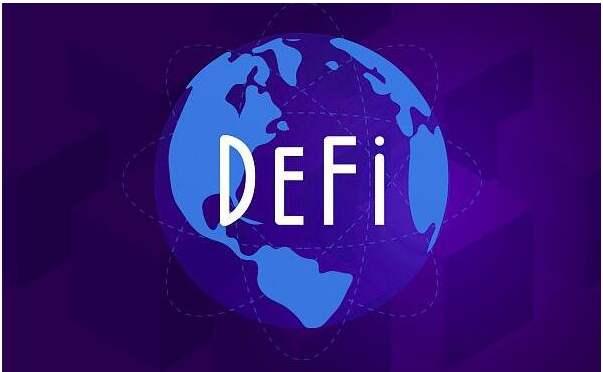LD Capital: Blue Chip DeFi New Narrative, Reviewing Aave & Compound
Author: Jill, LD Capital
Preface
Recently, the announcement by Compound founder Robert to establish a new company focused on tokenizing U.S. Treasury bonds has ignited the RWA (Real World Asset tokenization) narrative, leading to a surge in the price of the Compound token COMP. Additionally, the leading RWA project MakerDAO and the lending giant Aave have also seen significant price increases recently.
Compound and Aave have similar product forms, and we have previously published business data related to MakerDAO. Therefore, this article will mainly review the fundamental data of Aave and Compound from three major aspects: lending business, token emissions, and protocol revenues and expenditures.
Summary
Aave's capital volume is 2.6 times that of Compound, making it the largest protocol in the current DeFi lending space. Although Compound was the first protocol to propose the liquidity pool lending model, its conservative team and slow business expansion have led to a lack of subsequent development. Aave, on the other hand, seized the opportunity for multi-chain development, and its innovative team has allowed it to surpass its predecessors.
The security of DeFi protocols is fundamental to project development, and reducing potential risks is the team's most important task. Both Aave and Compound have risk isolation measures in their product designs; however, Compound's current approach is more aggressive, directly reducing the complexity of the protocol by isolating various asset pools based on the underlying assets. This also means that Compound has given up a portion of the market share for altcoins as underlying assets. Aave, however, tends to be a more comprehensive lending protocol, aiming to capture more market share by isolating new assets from core asset pools, thereby reducing the potential risks of using new assets as collateral.
In terms of risk control measures, both have introduced reserves as a remedy for potential debt losses. Additionally, Aave has a built-in safety module, where token stakers provide a safety net for the entire protocol, empowering the protocol's tokens while locking up some token liquidity to reduce market inflation.
Regarding token emissions, both protocols currently have relatively low emission rates, and the selling pressure on tokens has a minimal impact on secondary market prices. Aave is an earlier launched protocol, with a token circulation rate of 90.5%, although the safety module has locked up some token liquidity. Compound pioneered liquidity mining, but the liquidity generated from this method tends to be immediately sold off when participants gain substantial returns, significantly impacting the protocol. Therefore, Compound has changed its liquidity incentive measures to distribute tokens to real users, currently achieving a token circulation rate of 68.6%.
Both COMP and AAVE token prices have seen significant increases due to the recent RWA narrative; however, the new company founded by Compound's founder is still in the application stage, and Aave's RWA capital scale is only $7.65 million, merely 0.3% of Maker's capital volume.
From the perspective of protocol revenues and expenditures, Aave has a more diversified income source, with all borrowing interest from the stablecoin GHO going to the treasury. The trend of treasury income shows that since the last bull market, Aave's protocol income has sharply decreased; however, current protocol income can cover protocol expenditures, while Compound still relies on COMP token rewards for subsidies. Aave's protocol income is approximately four times that of Compound.
1. Product Fundamentals
1. Product Versions
Aave's initial version was peer-to-peer lending, which was later revised due to low lending matching efficiency, adopting Compound's liquidity pool lending model to provide high liquidity. Aave is currently on version V3, which aims to provide higher capital efficiency, greater security, and cross-chain lending functionality.

Higher capital efficiency refers to the efficient mode (eMode), which classifies assets and sets risk parameters based on asset types. When a borrower's collateral and the borrowed asset are of the same category, a higher borrowing limit can be obtained. Greater security refers to the isolation mode, where newly voted lending assets will first enter an isolation mode. Assets in this mode will have a debt ceiling, and when used as collateral, only permitted stablecoins can be borrowed, aiming to list more long-tail assets while ensuring the protocol's security.
These functions are currently achievable in V3, while the cross-chain lending (Portal) feature was deployable as early as March 2022 when V3 was launched. However, for safety reasons, the team has been cautious about launching this feature, and it has not yet been officially deployed. Aave's cross-chain lending is not controlled by the Aave protocol itself but involves third-party cross-chain bridge protocols.
Compound was the first DeFi protocol to propose liquidity pool lending, allowing borrowing between mainstream crypto assets. However, the V3 version has changed the previous general lending model by isolating various asset pools based on the underlying assets, aiming to isolate liquidity pool risks at the architectural level and avoid irreparable losses to the protocol due to the potential risks of a single asset.
Specifically, in Compound V2, the protocol allows users to freely deposit (collateralize) or borrow supported assets. Collateralized assets are straightforward, while the underlying assets are those borrowed by users. In Compound V3, each pool will only have a unique underlying asset, but collateralized assets are not restricted. The first underlying asset pool launched in V3 is USDC, allowing users to collateralize mainstream crypto assets to borrow stablecoin USDC.
2. Lending Business
When users choose a lending protocol, the primary consideration is the security of the assets. Under the premise of capital safety, users generally prefer protocols with larger capital scales, as larger capital usually means better liquidity. Additionally, factors such as which party offers more favorable interest rates, the variety of supported assets, and lending incentives will also be considered. We will compare the two protocols based on these dimensions.
TVL data comes from defillama.com. Since the last bull market, the overall scale of DeFi protocols has experienced significant retracement. Compound and Aave are leading protocols in the DeFi lending space, with Aave's capital volume currently being 2.6 times that of Compound, making it the largest protocol in the lending field.
Both Aave and Compound are now multi-chain deployed; however, Aave entered chains like Polygon as early as 2021 and has maintained a leading position on other chains, capturing more market share. Compound only began deploying on other chains this year. Nevertheless, the Ethereum chain remains the primary lending venue. Aave supports a wider variety of altcoins, but some tokens have been frozen due to potential risks, so the number of supported tokens is currently similar to that of Compound V2. Compound V3 supports very few asset types; the USDC base market collateral includes ETH, WBTC, COMP, UNI, and LINK, while the ETH market collateral only includes wstETH and cbETH. Furthermore, Aave has supported stETH as collateral since February 2022, but Compound only began listing wstETH and cbETH in January of this year. This indicates that Compound is lagging in multi-chain development, while Aave is more aggressive in business expansion, gradually widening the gap.
Both use dynamic interest rate lending, with Ethereum blocks as the interest calculation unit, initially proposed by Compound. The core of the interest rate model is the utilization rate of funds, which is calculated based on market borrowing demand through algorithms, with little difference between the two. When the utilization rate is high, the interest rate will also be higher, and both have introduced optimal interest rates, meaning that when the utilization rate reaches a certain threshold, borrowing rates will sharply increase to limit borrowing and prevent liquidity depletion. The capital utilization efficiency of stablecoins and altcoins in Aave is higher than that in Compound.
In terms of liquidity pool models, both have risk isolation measures; however, Aave's liquidity pool still operates under a full pool risk model. For the sake of protocol security, newly launched assets will first enter isolation mode, reducing the risk of these assets being used as collateral by setting specific risk parameters and underlying assets. Compound V3 isolates various asset pools based on the underlying assets, isolating risks from a system architecture perspective, but this also means that Compound has given up some market share for altcoins as underlying assets.
To address potential risks that may occur in the system, Compound has introduced the concept of "reserves," where the system allocates a portion of the borrowing interest as reserves to cover protocol losses. In addition to collecting reserves, Aave also employs a safety module to back the protocol, where AAVE token stakers bear up to 30% of the protocol's safety risk. In return, stakers can earn AAVE token rewards and share in protocol income.
Compound is the protocol that pioneered the concept of liquidity mining, using COMP tokens as rewards, which are gradually being reduced. Aave's protocol was launched relatively early, and its tokens are essentially in full circulation. Currently, it can only collaborate with other projects to incentivize liquidity, such as the partnership with Polygon in June 2021, which provided over $85 million in token rewards for Aave Polygon market liquidity mining.
3. Other Businesses
Stablecoin: Aave's stablecoin GHO was launched on the mainnet on July 15, with a borrowing interest rate of 1.5%, making it more competitive than other stablecoins. All GHO interest income will go to the treasury. In just two days after launch, the total amount borrowed in GHO reached 2.21 million tokens, and the large-scale minting of GHO will depend on the team's subsequent measures to promote liquidity. Compound currently has no plans to issue a stablecoin.
RWA: Aave is the second DeFi protocol to introduce RWA assets after Maker, collaborating with Centrifuge Tinlake. The RWA market operates independently from the Aave lending market. The current capital scale is approximately $7.65 million, which is far less than Maker's $2.3 billion scale. Currently, only the USDC market can provide lending APY, while other markets no longer offer it. Users who successfully pass KYC only need to deposit USDC in the USDC market to earn a base annualized yield of 2.83% and a liquidity mining yield of 4.09% in wCFG.
On June 29, the founder of Compound announced that he had submitted documents to the U.S. securities regulatory agency to establish a bond fund company called Superstate, which is still in the application stage.
 Source: Aave Official Website
Source: Aave Official Website
From the development of the lending business, although Compound pioneered the liquidity pool lending protocol, its relatively laid-back team has led to a lack of subsequent development and slow business expansion. In contrast, Aave has seized the opportunity for multi-chain development and has an innovative team, gradually widening the gap with Compound.
2. Token Demand and Emissions
Aave released a new version of its economic model in July 2020, swapping the original token LEND for AAVE at a ratio of 100:1, with LEND tokens in full circulation. The total supply of AAVE tokens is 16 million, of which 13 million are available for the original LEND token swap, and the remaining 3 million are for protocol issuance, used for Aave's ecological reserves.
The main use cases of AAVE in the protocol are governance and staking. The Aave protocol has a built-in safety module (SM), where token holders can stake their funds to back the protocol in case of a debt gap. In return, stakers can earn AAVE token incentives and share in protocol income.
From the staking interface on the official website, it can be seen that the current daily emission of AAVE tokens is 1,100 tokens. Based on the price of $80.56 on July 15 from Coingecko, this is worth approximately $886,000, and the current circulation of AAVE tokens has reached 90.52%.
 Source: Aave Official Website Staking Interface
Source: Aave Official Website Staking Interface
The Compound token is COMP, officially launched in June 2020, with a total supply of 10 million tokens. COMP serves as the governance token in the Compound protocol, primarily used for participating in protocol governance (proposal voting) and as liquidity incentives in the lending market. The initial distribution plan for COMP is as follows:

Currently, the ongoing unlocking pressure on the token mainly comes from the founders and team, as well as the portion allocated to users. The allocation plan for the founders and team is unclear, while the user allocation mainly incentivizes lending activities.
According to a proposal passed on July 15, 2023, the incentives for users participating in USDC and DAI lending in the V2 market have been reduced from 161.2 COMP to 111.2 COMP. The total rewards for the V2 market are now 111.2 * 4 = 444.8 COMP/day (with lending and borrowing market rewards being 0.015 COMP/block, respectively). A concurrent proposal will reduce the borrowing rewards in the V3 lending market from 481.41 COMP to 381.41 COMP, while the supply rewards will be increased from 0 to 100 COMP/day, shifting some borrowing incentives to the supply market, so the total rewards for the V3 market remain at 481.41 COMP.
Based on the above proposal, the current daily emission of COMP is confirmed to be 926.21 tokens. Based on the price of $74 on July 15 from Coingecko, this is worth approximately $685,000, and the current circulation of COMP tokens has reached 68.56%.
As relatively early-launched DeFi protocols, both Compound and Aave currently have low token emission rates, and the selling pressure on tokens has a minimal impact on secondary market prices. The protocol tokens of both are primarily used for governance and incentivizing protocol users. The key difference is that Compound distributes tokens to real users participating in lending activities to attract liquidity, while Aave incentivizes token holders to stake, which can back the protocol's debts and reduce token inflation. Currently, about 4.68 million tokens are staked in the safety module, so the actual circulation of AAVE is around 61.3%.
3. Protocol Revenues and Expenditures
Aave's treasury consists of system reserves and treasury collectors. The sources of Aave protocol income are: 1) interest rate spreads from deposits and loans, which vary based on lending market rates; 2) flash loan fees, typically 0.09% of the borrowed amount, with 30% going to the protocol treasury and 70% distributed to depositors; 3) GHO minting income; 4) in V3, there will also be instant liquidity fees, liquidation fees, and portal fees paid through bridging protocols, the latter two of which have not yet been activated.
Aave's treasury currently has an accumulated value of $130 million, of which $91.5 million (1.2 million tokens) is in AAVE tokens as ecological reserves, and the remaining $25.8 million is in stablecoins.
 Source: llama.xyz
Source: llama.xyz
The above data comes from llama.xyz, a website officially recognized by Aave, although the data collection period on this site started in January 2022. Taking June 2023 as an example, the monthly expenditure (token incentives) was $1.5 million, while the monthly income was $2.4 million, resulting in a surplus of $900,000, which is consistent with Token Terminal data.

The income sources for the Compound protocol are solely from the interest rate spread of loans and deposits. Since there is no official statistical website, to maintain consistency, we will refer to Token Terminal data.
 Source: Token Terminal
Source: Token Terminal
In Token Terminal's calculations, protocol revenue = fees paid on loans - supply-side fees. Earnings are defined as protocol revenue - liquidity incentive expenditures.
Aave's protocol revenue has gradually increased since May 2021, peaking between September and November 2021. After that, revenue gradually declined, and by April 2022, it had significantly decreased to a monthly income of $1.9 million. By October 2022, the monthly income had dropped to $860,000, which was only 12.6% of the peak period = (86/680) * 100%, and it continued to decline. Starting in March 2023, protocol revenue began to recover, reaching a monthly income of $1.3 million.
Earnings are related to token prices and the quantity of token emissions; the higher the token price, the lower the earnings. By December 2022, protocol revenue was able to cover token incentive expenditures, with the main influencing factor being the decline in AAVE token prices. Since December 2022, the protocol has begun to generate surplus.

Source: Token Terminal
Since January 2021, Compound's protocol revenue has gradually increased, peaking between March and April 2021, with monthly income around $5 million. Since February 2022, Compound's revenue has sharply declined, maintaining around $1 million monthly, and by May 2022, revenue had dropped to $460,000, continuing to slide.
Compound pioneered the lending-to-mining model, with significant token incentives, leading to lower earnings. After April 2022, Compound changed its token incentive model, gradually reducing COMP rewards, and the price of COMP tokens also saw a significant decline, causing earnings to gradually recover. However, the current protocol revenue still cannot cover token incentive expenditures.

Source: Token Terminal

Source: Token Terminal
According to LinkedIn data, Aave currently has 98 employees, while Compound has 18 employees, making Aave's workforce five times that of Compound, which likely results in significantly higher personnel expenditures.
From the revenue sources of both protocols, it can be seen that Aave has a more diversified income source, while Compound's is relatively singular. If we look solely at protocol revenue, based on June's income, Aave's monthly revenue is approximately 4.4 times that of Compound = (105/24.5). Aave's protocol revenue can currently cover token incentive expenditures, while Compound still relies on COMP token subsidies.












